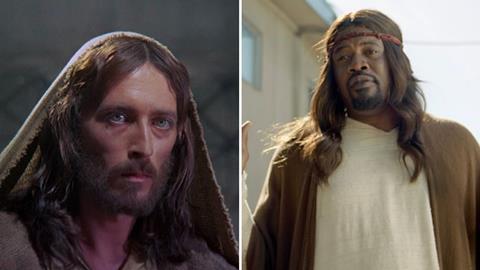When Dr Victoria Omotoso showed Black South Africans films which depicted Jesus as both Black and white, most chose white Jesus as the most historically accurate. It just goes to show how far we have to go in decolonising the image of our saviour, she says

Due to globalisation and commercialisation, the image of white Jesus is everywhere. There is a long history of missionaries, churches, the media and advertising using this iconography almost exclusively as an official portrait of what Jesus looks like.
But what does this mean for Black Christians? And how can they relate to a Christ whose image, for centuries, has been regulated to a form of whiteness and used to promote colonial ideas?
To investigate this further, I conducted a study of responses of Black South Africans to Western and African representations of Jesus in film. It revealed how deeply the Western image has seeped into their cultural subconscious. They rejected the African representation of Jesus on screen, instead embracing the more Western, white representation, concluding that this is how Jesus would have looked historically.
A long history
The white Jesus image emerges from a long history of Western Christianity. Early artistic Western Christian references of the white (light) / black (dark) dualism can be traced to interpretations of the very first page of the book of Genesis: “And God separated the light from the darkness” (Genesis 1:4, ESV). This is just one biblical example of how this verse has been distorted, and Christianity used as an ideological vehicle within which to frame the preference of whiteness.
The image of a white saviour, as found in Renaissance art, was propagated by white missionaries. Colonialism brought with it eurocentric ideas and concepts that implemented a power through which Christianity sustained the homogenised images of Jesus.
The white Jesus image has been a feature of cultural imperialism (promoting one culture’s beliefs, values or practices over others) in Christian iconography for centuries. So much of trying to dismantle this begins with knowledge and education. We need to cultivate a cultural resistance to the cultural imperialism that keeps the image of Jesus white.
Destabilising white Jesus
The challenge to reclaim the image of Jesus remains. But how should this be done? Some of the first places we encounter images of Jesus are in church buildings. Churches can begin to create more inclusive spaces by being conscious about the iconography presented there.
For Black Christians, it is important to recognise that although white Jesus may be the dominant image, it is just one among many. There are over 2 billion Christians worldwide; this means that there is a kaleidoscope of representation of who Jesus is.
More importantly, representations of Jesus should be appreciated in light of the transcendence of his nature. The moves beyond historical debates about how white or Black he is and towards encountering Jesus, a saviour who understands the human condition of oppression.
Suffering saviour
If we are consciously representing Jesus in the formation of a Black body, this should serve as a means to identify a figure that is familiar with suffering (see (Hebrews 2:18; 1 Peter 2:21). The image of a white God maintains ideologies that continue to prop up systemic and institutionalised systems of whiteness.
James Cone, known as the father of Black theology, asserts that God’s mission of liberation in the world should be seen from a vantage point that Jesus’s Blackness stands on the side of those that are oppressed. Understanding this position, and the implications of propagating the white image of Jesus, should be a catalyst for allyship with Black Christians in destabilising the white Jesus image.
Formulating a more conscious discipleship formation for all Christians is to recognise, acknowledge and identify a Christ who is familiar with suffering, and always fights for the cause of liberation.


































No comments yet